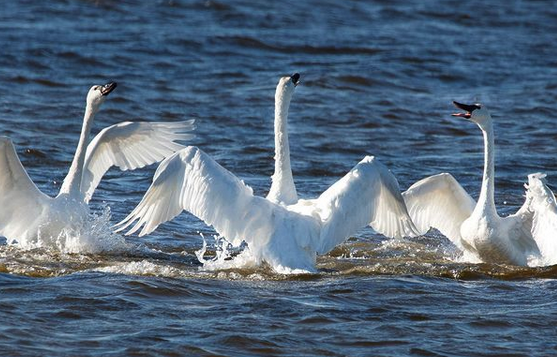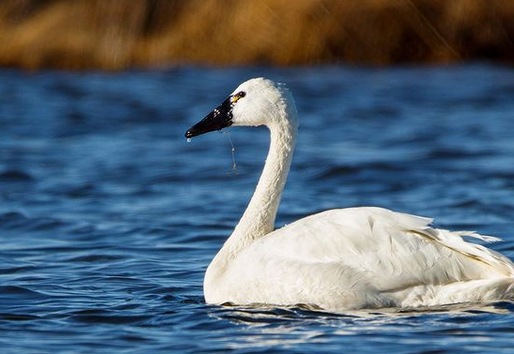By: Sally Siko- Admin BWNC
One of the most entertaining species of bird to watch in NC is the Tundra Swan. Each November, huge flocks of them arrive in our eastern coastal counties to spend the winter on waterfowl impoundments and agricultural fields. That being said, just because they travel together doesn’t mean that they all get along.

This was the case when I photographed a small group of swans on the North Pond at the Pea Island NWR. There were three swimming together when a fourth swan flew in. Upon landing, the first three birds immediately set in to attack the fourth bird but he was not deterred by their efforts in the least. Instead he fought back, biting and slapping his wings against his attackers before settling in to join the flock.
Bird drama at its finest lol!

Tundra Swans nest in northern Alaska and in Canada’s Northwest Territories, Nunavut, northeastern Manitoba, northern Ontario, and northwestern Quebec.
Interestingly, Tundra Swans break off into 2 distinct groups of eastern and western migrating populations when traveling between breeding and wintering grounds.
Swans that nest east of Point Hope in northern Alaska winter on the Atlantic coast, while birds breeding from Point Hope south & west winter along the Pacific.
It seems odd for the birds in the Coleville River region of AK make such a long trip east which spans the United States when a flight due south/west to California is quite a bit closer.
Whatever the reason, I’m glad they are here!

These impressive birds will stick around eastern North Carolina until February before heading north so we’ve still got plenty of time to enjoy them over the next few months.
Photos by @sally_siko of @birdwatching_nc on my mighty mirrorless monster, the @canonusa #R5



